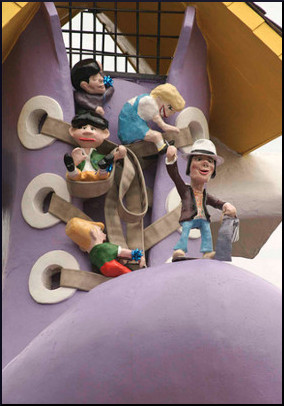
“This screams for Living Wages,” was the reaction of Richard R. Troxell on learning about a study about child abuse, conducted by Children’s Hospital of Pittsburgh and three other children’s hospitals, and we will return to that remark presently. The study in question had this objective:
To evaluate the rate of abusive head trauma (AHT) in 3 regions of the United States before and during an economic recession and assess whether there is a relationship between the rate of AHT and county-level unemployment rates.
It concluded:
The rate of AHT increased significantly in 3 distinct geographic regions during the 19 months of an economic recession compared with the 47 months before the recession. This finding is consistent with our understanding of the effect of stress on violence.
The entire report is available as a PDF download from Pediatrics magazine, and is explained in great detail by a press release sent out by the Children’s Hospital of Pittsburgh. The study looked at rates of head trauma that were unmistakably of abusive origin, both before and after the recession, whose beginning it dates to December 2007, and found that…
The number of cases of abusive head trauma (shaken baby syndrome) rose from six per month before Dec. 1, 2007, to 9.3 per month after that date… Dr. Berger said that the impetus for the study was that in 2008, more patients at Children’s Hospital of Pittsburgh of UPMC died from abusive head trauma than from non-inflicted brain injury.
The person cited above and quoted below is Rachel Berger, Medical Doctor and Master of Public Health, child abuse specialist and researcher at Children’s Hospital’s Child Advocacy Center. As lead author of the study, which was also covered by the Associated Press and CBS News, among other major media, Dr. Berger said,
Our results show that there has been a rise in abusive head trauma, that it coincided with the economic recession, and that it’s not a phenomenon isolated to our region but happening on a much more widespread level… To think that more children died from abusive head trauma than from any other type of brain injury that year is really remarkable and highly concerning.
Texas is one of the more influential states, for many reasons. People keep an eye on what happens in Austin, just like they pay attention to what happens in New York or San Francisco. Notions that start in Texas tend to spread. It’s such an interesting place, it has produced Molly Ivins, the incomparable writer on political matters, whose support of Texans experiencing homelessness is memorialized in Looking Up at the Bottom Line.
The great state of Texas produced Jim Adler, who founded a personal injury law firm and who has been a child advocate throughout his entire career. Among other activities on behalf of children, he has been a member of the Joint City/County Commission on Children for Houston and Harris County. Like many other professionals, he follows the news in the field of child health, and was moved to write about the study and its conclusion…
… that the recession has a punishing human cost: an increase in child abuse… The victims are usually the babies of low-income parents on hard times… What a shame that it is aimed at defenseless infants in the first months of life, a horror that this study reveals.
The statistic Adler cites says that 46 million Americans live in poverty. He suggests a “hidden epidemic of child abuse” that our awareness hasn’t caught up with yet, caused by the economic recession. He suggests that if families are not struggling so hard, the children are safer.
Adler hazards a guess that brain trauma is probably not the only type of child abuse that has increased, nor the only age group it has increased in. He says,
Until now, much of what we’ve seen on TV and the Internet or read in news magazines and newspapers has focused on the dollar costs of the recession, both in terms of personal budgets and government budgets. But in the background, little tears have been falling unheeded by reporters until now.
Richard R. Troxell has made a similar point about the connection between poverty and violence, and the apparent public obliviousness to that connection, saying,
The worse the economic situation is in the family, the greater likelihood of abuse. The further folks move away from poverty, the less likelihood of violence. I first researched this common sense issue years ago to find only one study on the topic.
Which brings us back to that other thing Richard said: “This screams for Living Wages.” In other words, the evidence about increasing child abuse is as good as an argument gets for ending homelessness. If anyone doubts the relationship between economics and family violence, they suffer from a delusion that Richard calls “Myth #26.”
Because of this myth, and at least 25 others, people are prevented from seeing the truth about the necessity for the Universal Living Wage. Please visit the Myths page and prepare to be astonished.
The Illustration (From Mother Goose):
There was an old woman who lived in a shoe.
She had so many children, she didn’t know what to do.
She gave them some broth without any bread;
And whipped them all soundly and put them to bed.
Reactions?
Source: “Abusive Head Trauma During a Time of Increased Unemployment: A Multicenter Analysis,” Pediatrics, 09/19/11
Source: “Incidence of Child Abuse Skyrocketed During Recent Recession, Children’s Hospital of Pittsburgh of UPMC-led Study Finds,” chp.edu, 05/01/10
Source: “Recession increasing child abuse,” blog.chron.com, 09/22/11
Image by crimfants (Paul), used under its Creative Commons license.


